#I'll reblog the poll and add a link to the post in a sec so sorry for all the reblogs
Explore tagged Tumblr posts
Text
Serpentin Vert (aka The Dragon Husband) won my fairy tale poll, so here's more about him
Serpentin Vert is both a character and the title of a fairy tale by Madame d'Aulnoy, published for the first time in 1698.
Even though the name is closer to "serpent" and some illustrators have depicted him as such, d'Aulnoy's description of him is closer to a dragon than a snake, and his size is big enough to have allowed him to physically carry his bride to safety.
Here is an English translation of the description by James Robinson Planché:
He has green wings, a body of a thousand colours, ivory claws, fiery eyes, and on his head is a bristling mane of long hair.
This is him rescuing his soon-to-be bride in an illustration from the Garnier edition, circa 1850 (my favorite one of him):
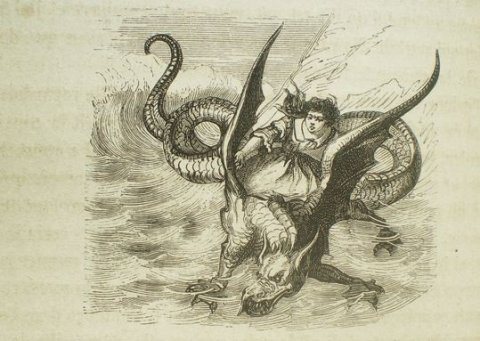
Serpentin Vert (translated by Planché as Green Serpent and in Spanish by Editorial Siruela as Serpentino Verde) is a fairy tale in the category know as "The Animal as Bridegroom" (Aarne-Thompson-Uther Index's ATU 425).
Some of these, and this one is no exception, work with Cupid and Psyche as a foundation (the most popular being Beauty and the Beast), but d'Aulnoy's style doesn't just use it as reference, she includes it in the story, as a tale the lead character reads and, much like Psyche or even Orpheus, still does what she shouldn't.
The lead of the story is Laideronnette, a princess cursed by a fairy to become the ugliest person alive, while her twin sister doesn't get said curse. She exiles herself after her family treats her poorly and meets Serpentin, who falls in love with her but she rejects him, since she's afraid of him. When he talks to her without her seeing him, she distrusts him, because she doesn't believe a king would fall in love with her, but starts having feelings for the person she spends so much time talking to. Their marriage is the halfway point of the story, because it's through Laideronnette breaking her promise (much like Psyche) that she will have to face many challenges to save the dragon she has fallen in love with. Of course, like most Animal Bridegroom stories, Serpentin is actually a cursed man.
Like most fairy tales written by the salonnières, this is a very long story, that takes twists and turns, has the characters move through different settings and gets in there a couple of songs and poems. If you're more used to the Perrault-like or even Grimm-like fairy tales, you may not be too familiar with the way in which salonnières told fairy tales, but these stories, born for the entertainment from women to other women in salons, are not always devoid of lessons but are more focused on the storytelling aspect and take a lot more pages to tell the story, describe surroundings and have the characters express their turmoil to the reader (or listener, originally).
Serpentin is always gentle and caring, although able to drop an "I told you so" when he feels it's warranted. Differently from Villeneuve's Beast (or Beaumont's even), he's more eloquent throughout the story and more active as well. There is a mutual saving between him and Laideronnette and her tasks to save Serpentin come after realizing she's in love with him, which makes their relationship dynamic a longer element to develop.
The fact that they're both cursed by the same fairy also generates an interesting dynamic in which both are at the mercy of a same enemy and can bond through the isolation caused by their self-imposed exiles. Of course, this being a classic fairy tale, she doesn't remain "ugly" and he doesn't remain a dragon.
The story isn't devoid of problematic stereotypes, these were French women in the 1600s, but most of the elements included trace back to the typical inspirations for d'Aulnoy: Greek mythology, opera and the folklore shared by midwives and nurses that accompanied women through motherhood. I talked a bit more about d'Aulnoy on this post, she was wild.
Now, to some more illustrations of the man of the hour:
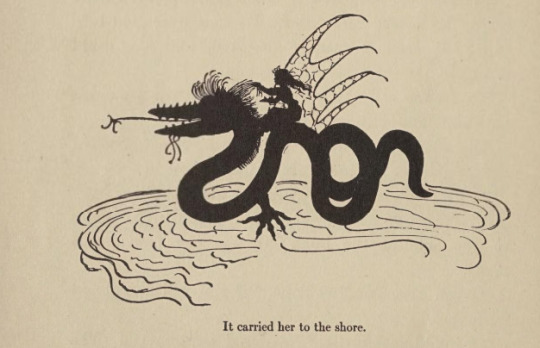
This one is from Harriet Mead Olcott (1919), who went more snake-like but kept the wings.
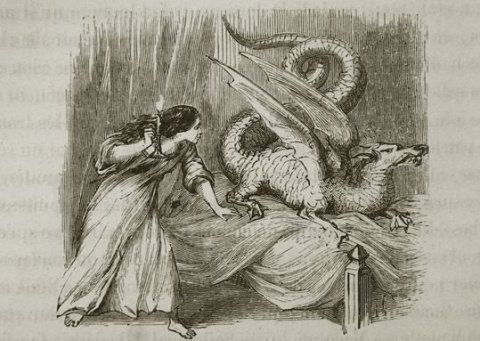
Another one from the Garnier edition, it didn't stay very consistent on the size of him.
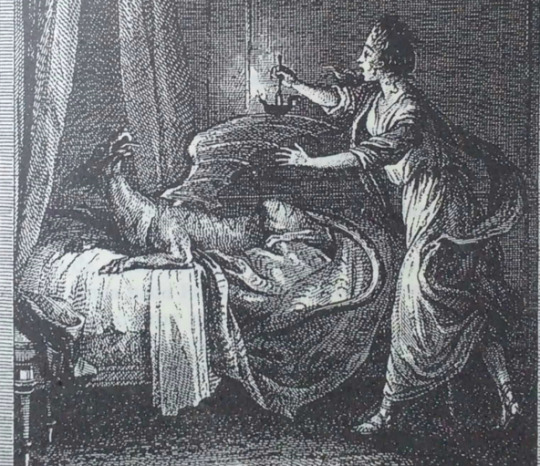
This is a part of the engraving made by Jean-Louis Delignon over this original by Clemént-Pierre Marillier (1785):
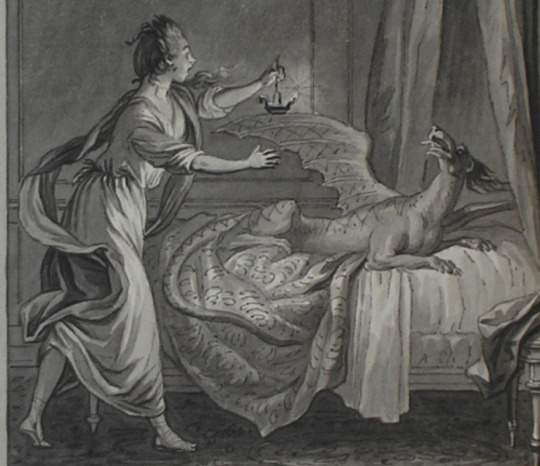
Maria Pascual played a bit more with Laideronnette's features, but it's more evident when she's beside her sister.
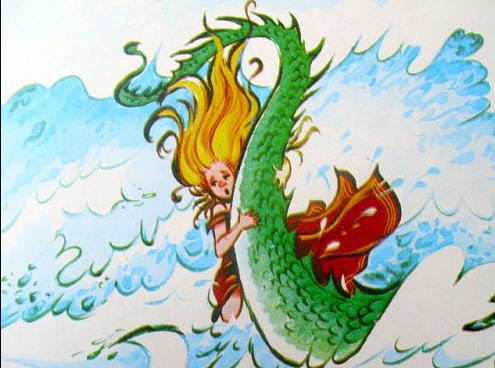
And a very recent depiction came from Natalie Frank in 2017 for Jack Zipes's compilation of d'Aulnoy stories titled The Island of Happiness, I think this is after Laideronnette was already transformed and changed her name into Discrète.

Serpentin Vert is actually the first of the fairy tales I included in my virtual workshop that starts next month (in Spanish). I suppose I shouldn't be surprised that it won the poll because of a) the nature of this site and b) the fact that d'Aulnoy would vibe with the discourse on here if she was around. You can find the original fairy tale in French here, the Planché English translation here and the Lawrence and Bullen translation here. For the Spanish version I had to translate it myself for the workshop, but there is a good translation in Siruela's edition of El cuarto de las hadas.
#fairy tales#serpentin vert#long post#luly rambles#books#I'll reblog the poll and add a link to the post in a sec so sorry for all the reblogs
86 notes
·
View notes